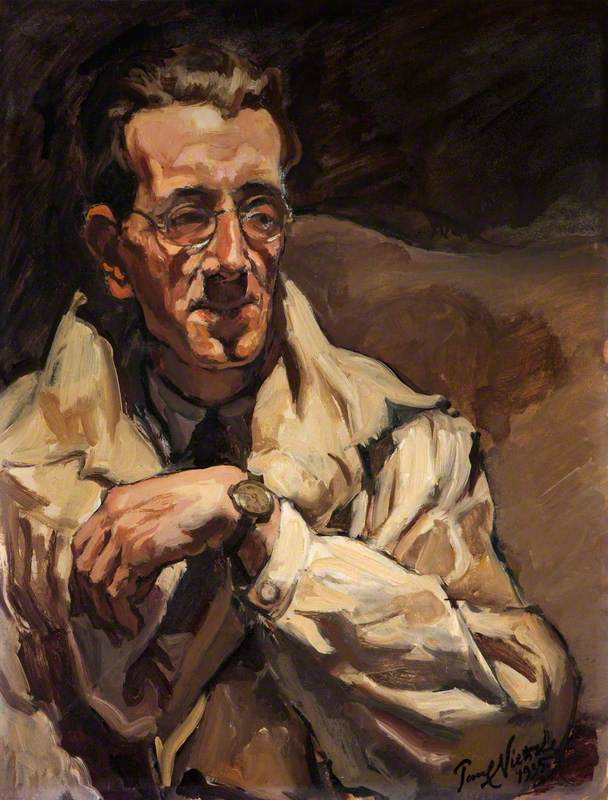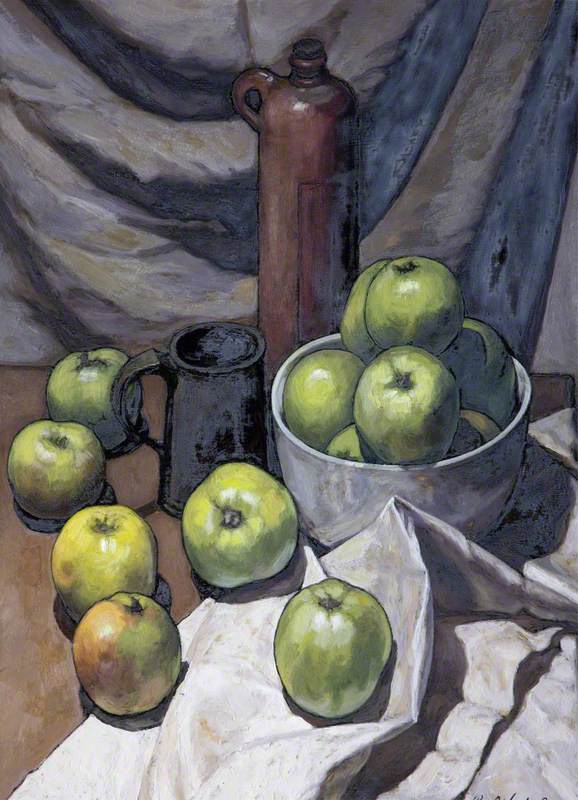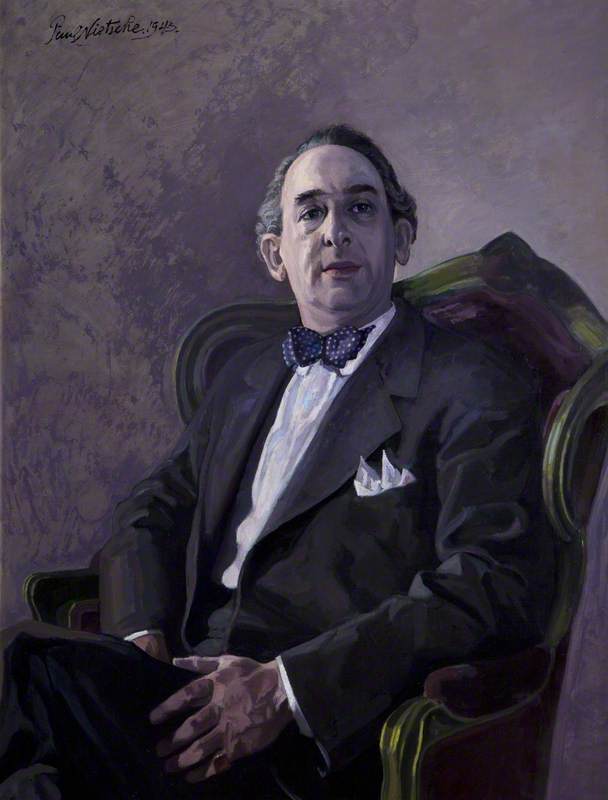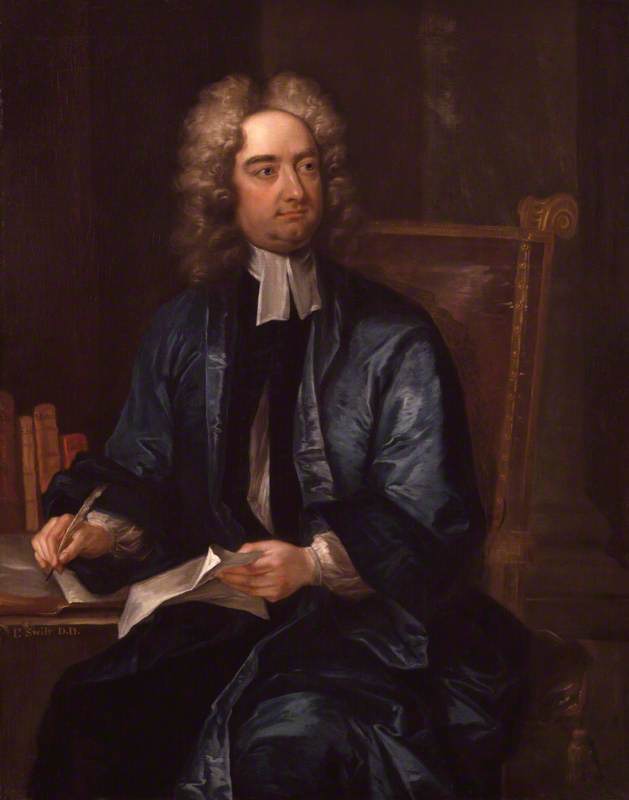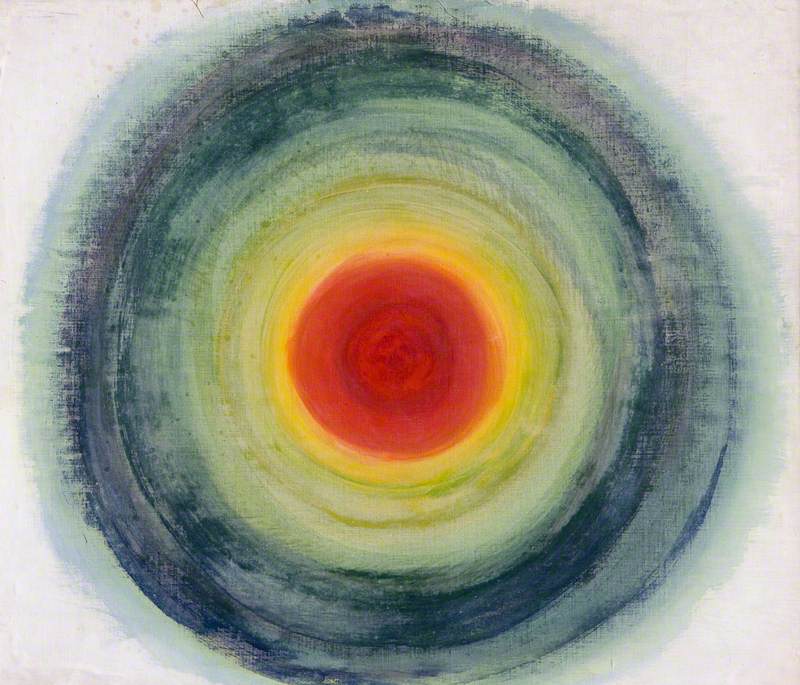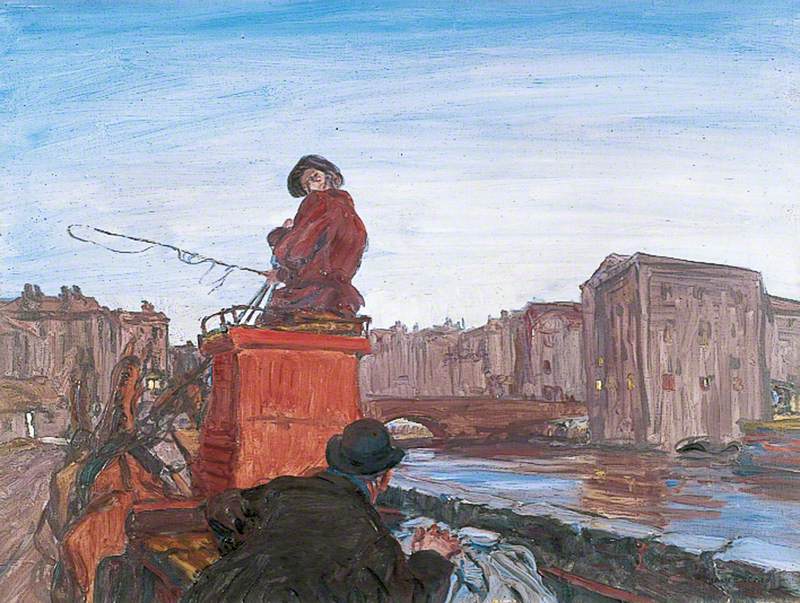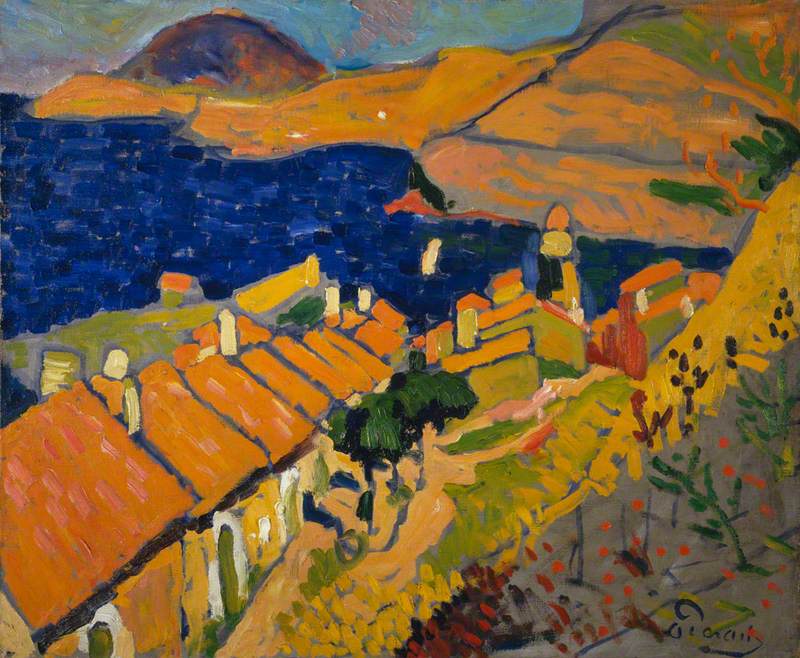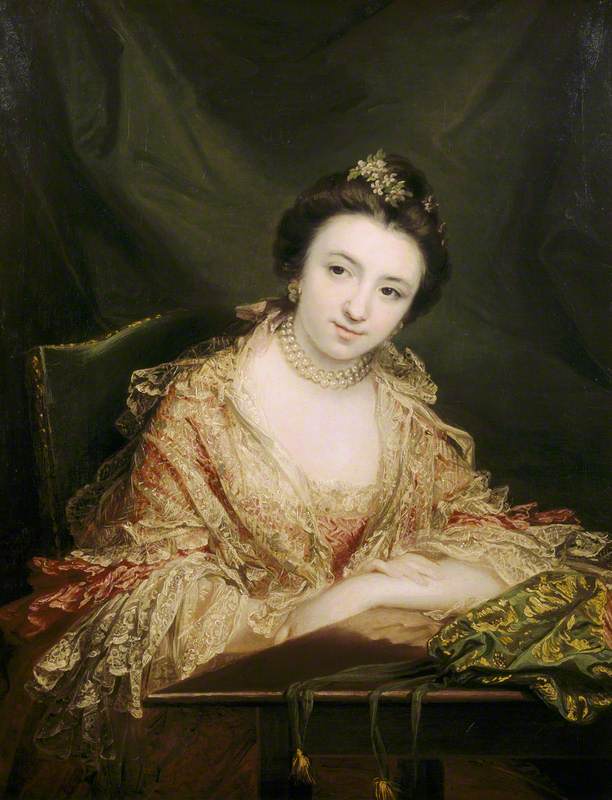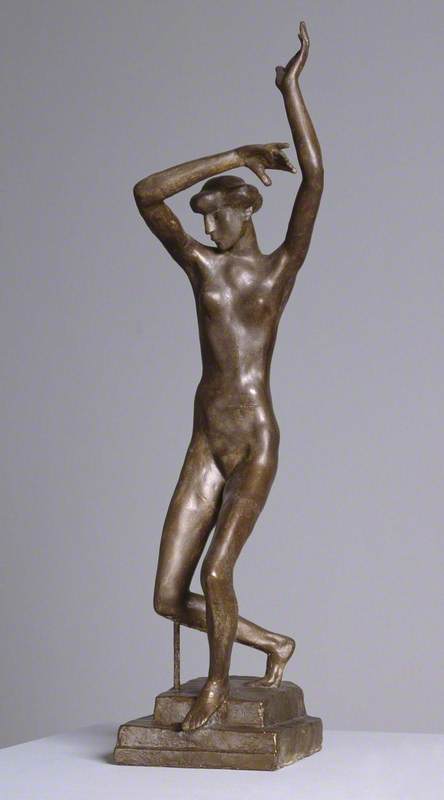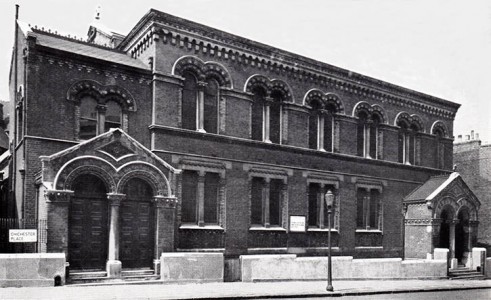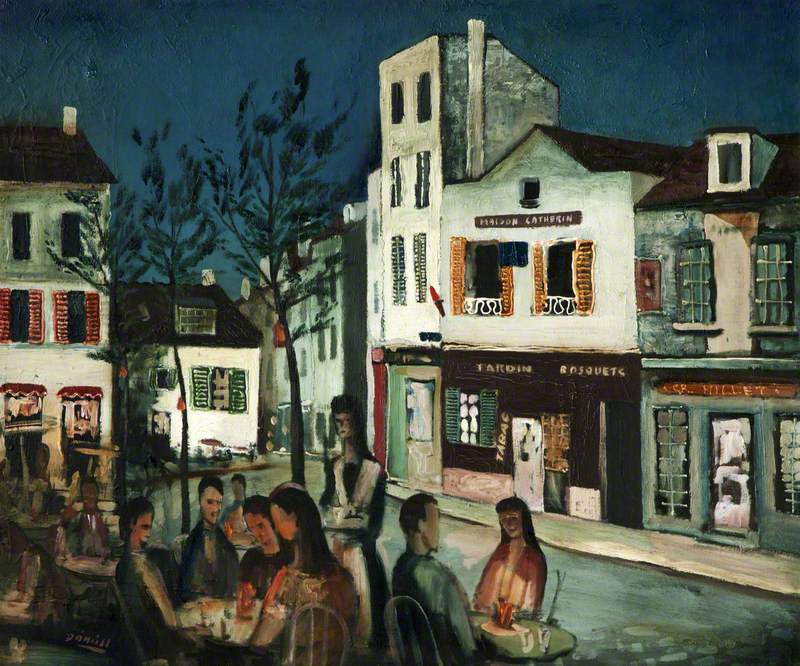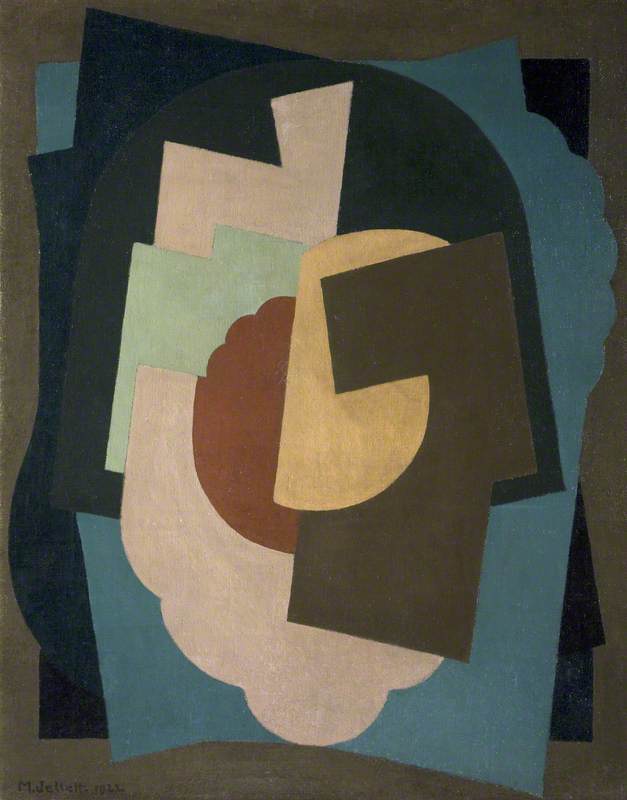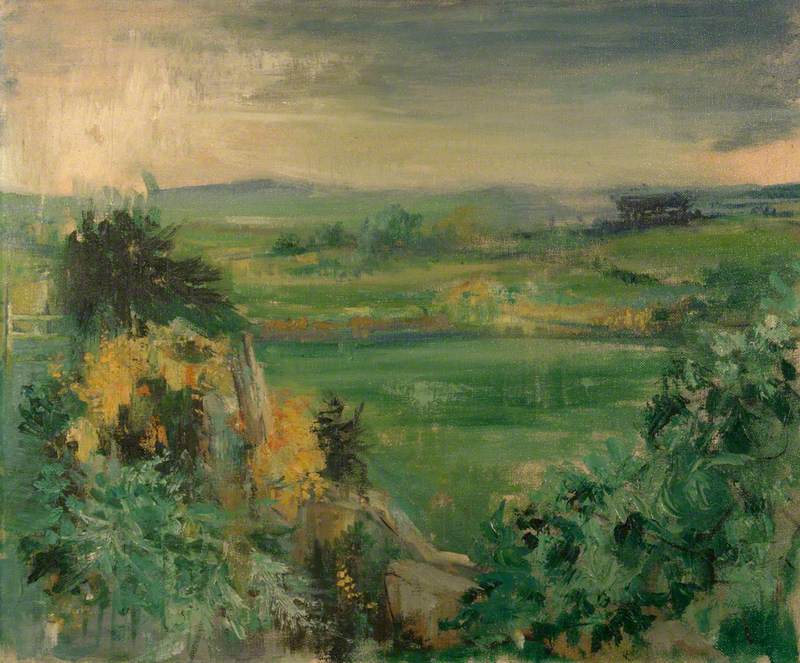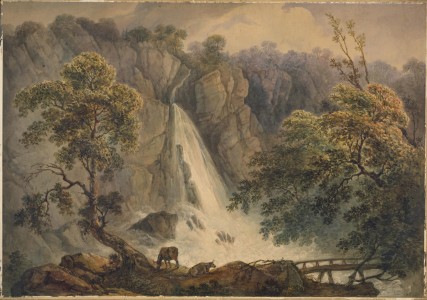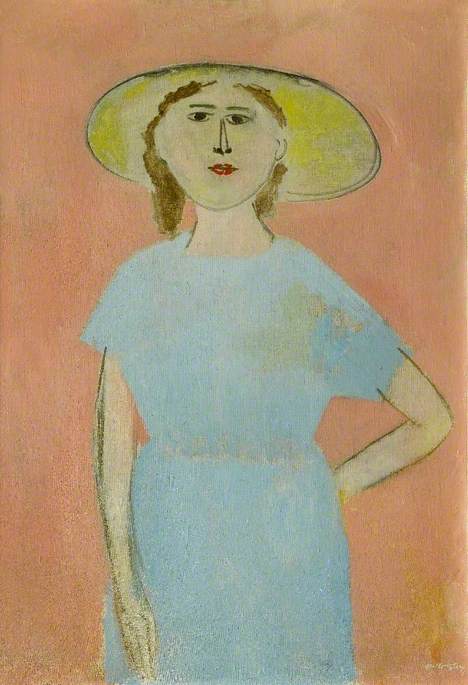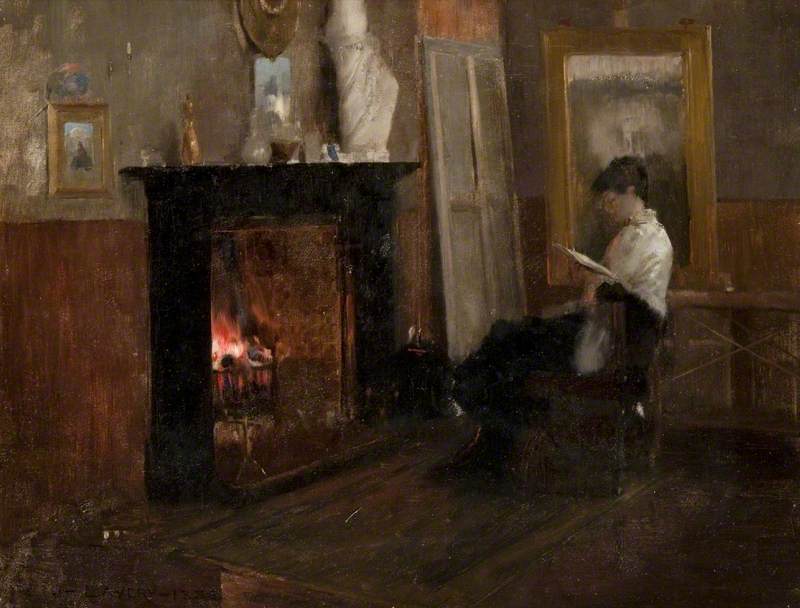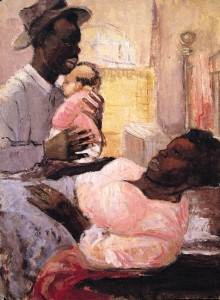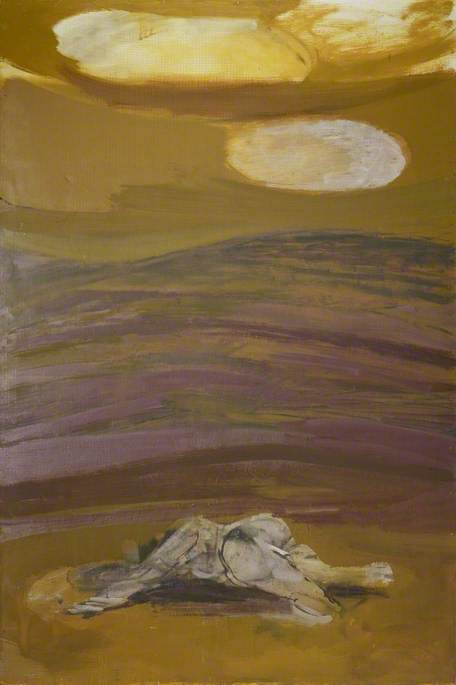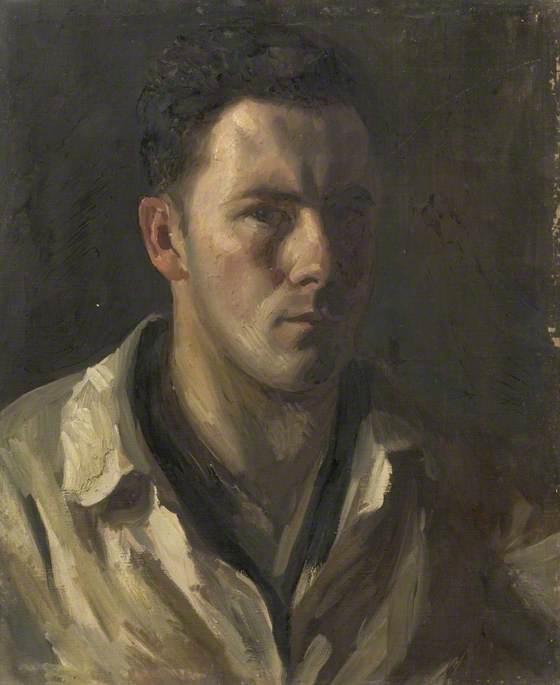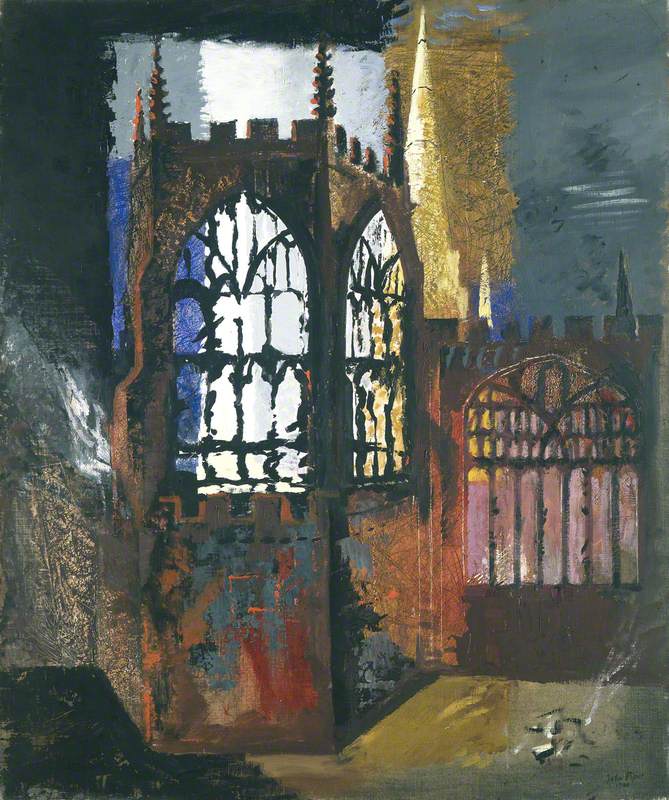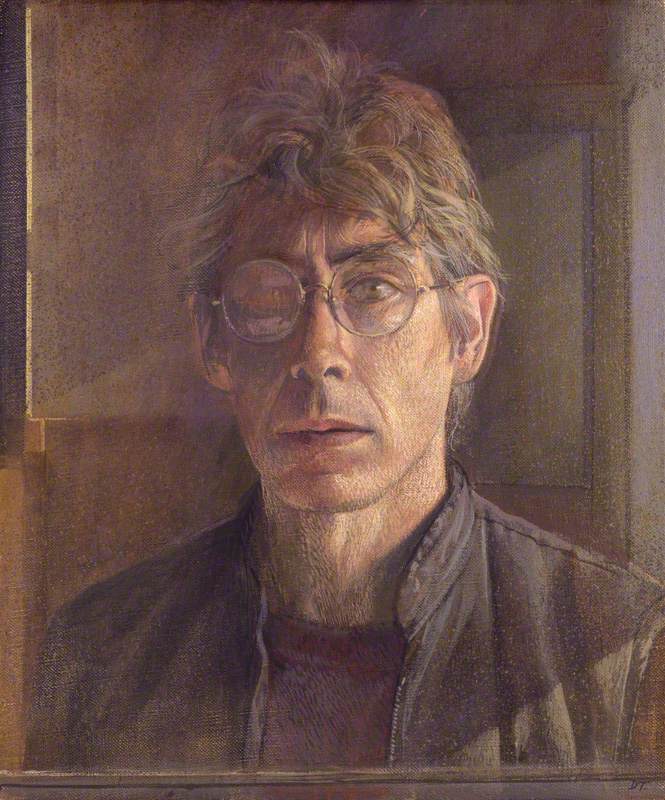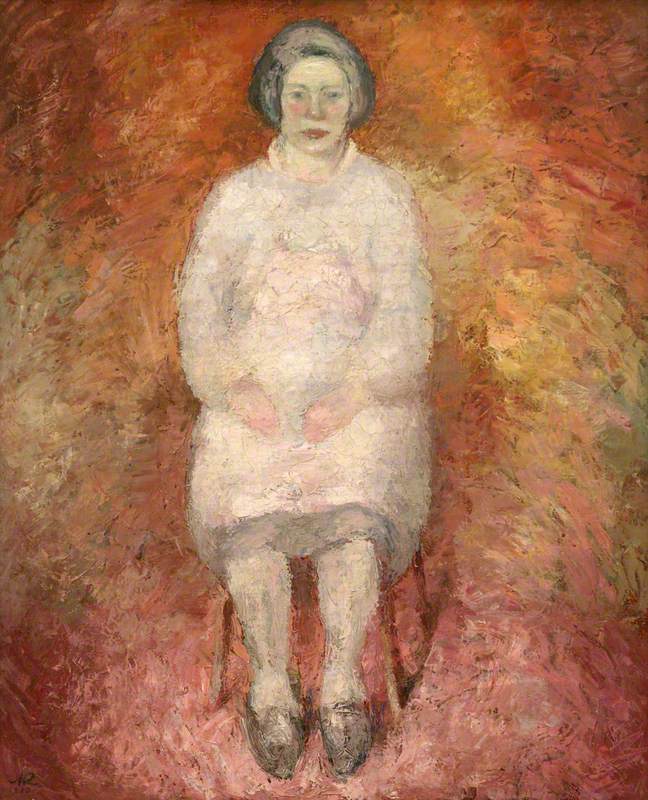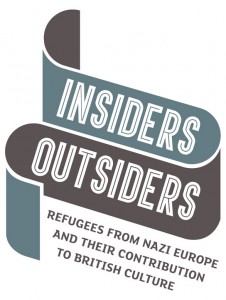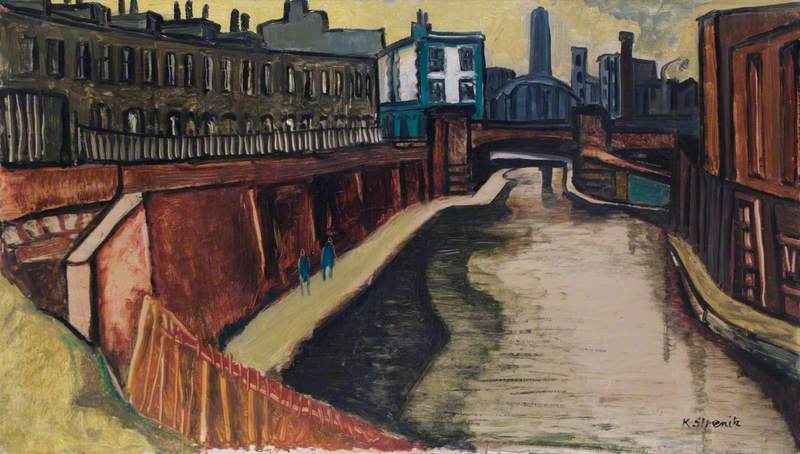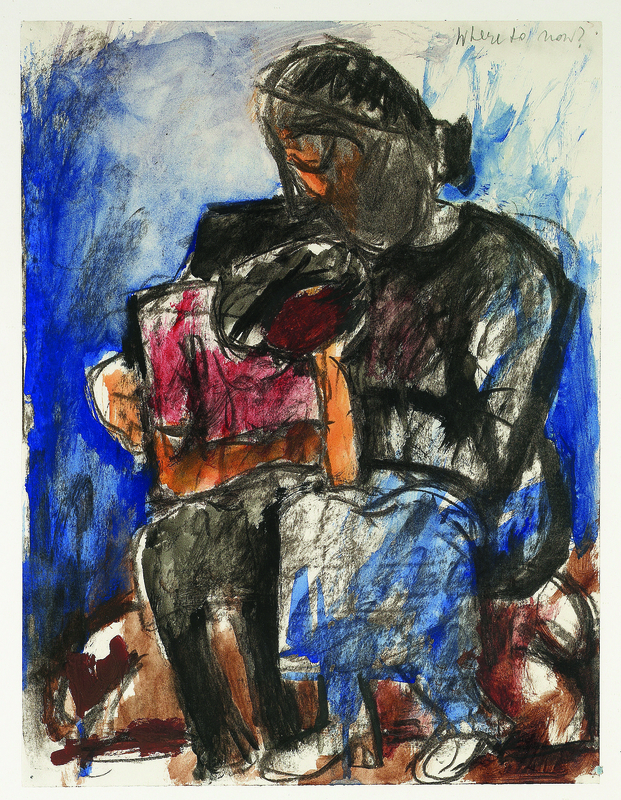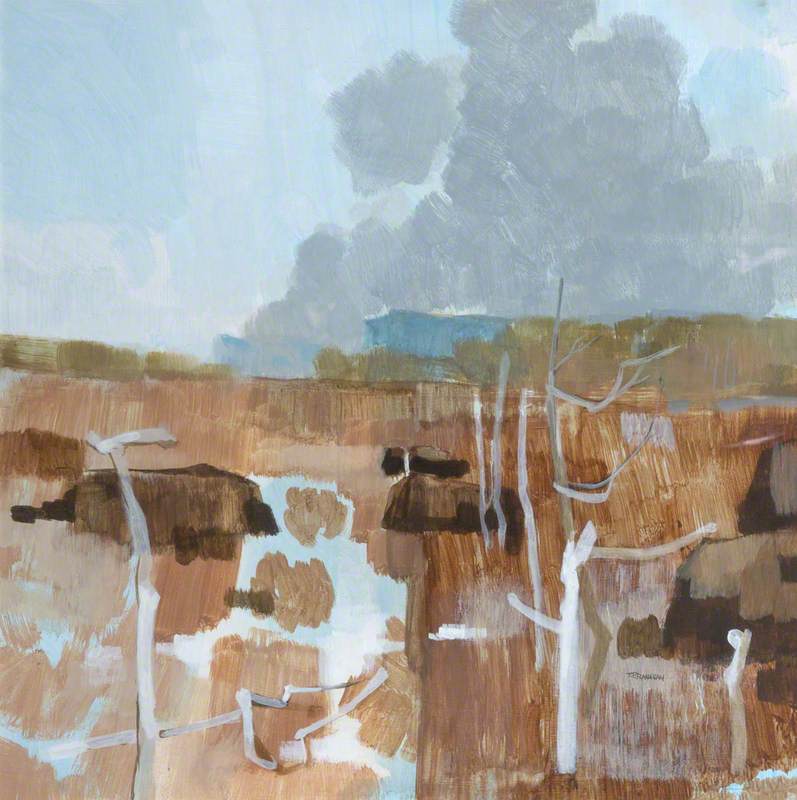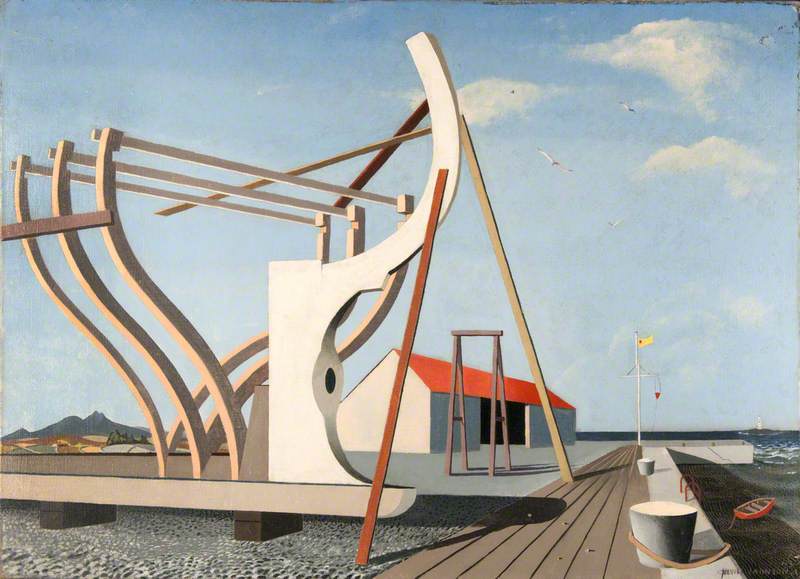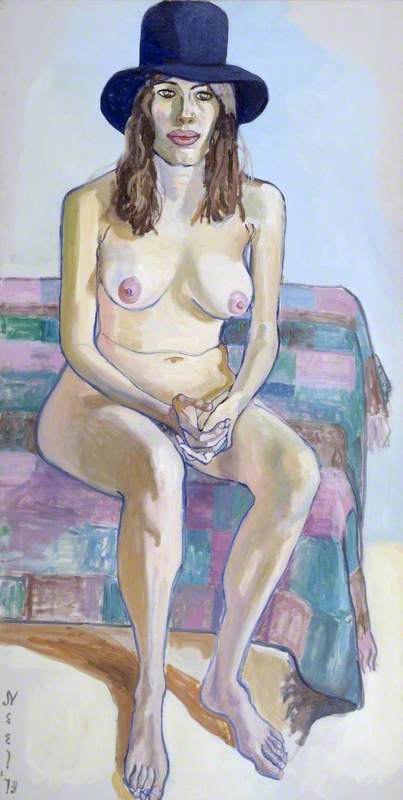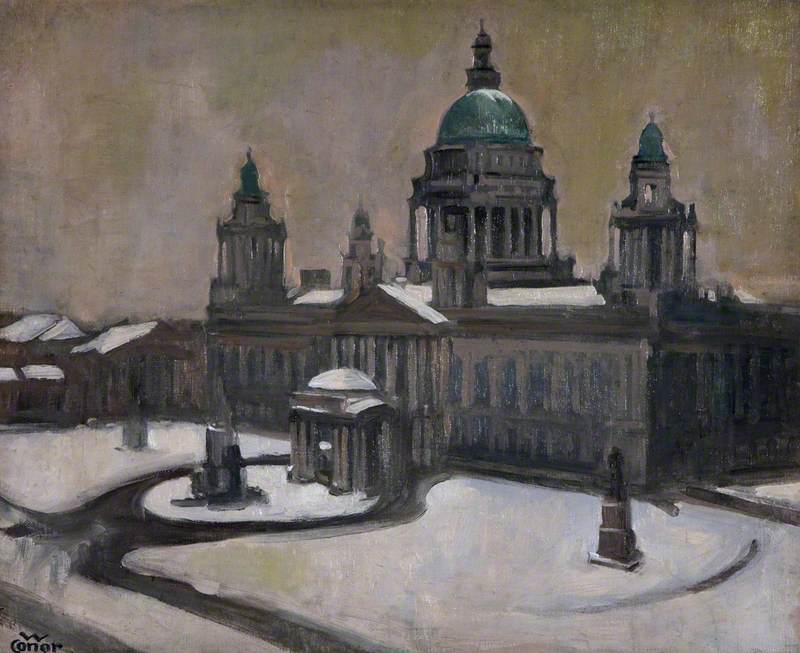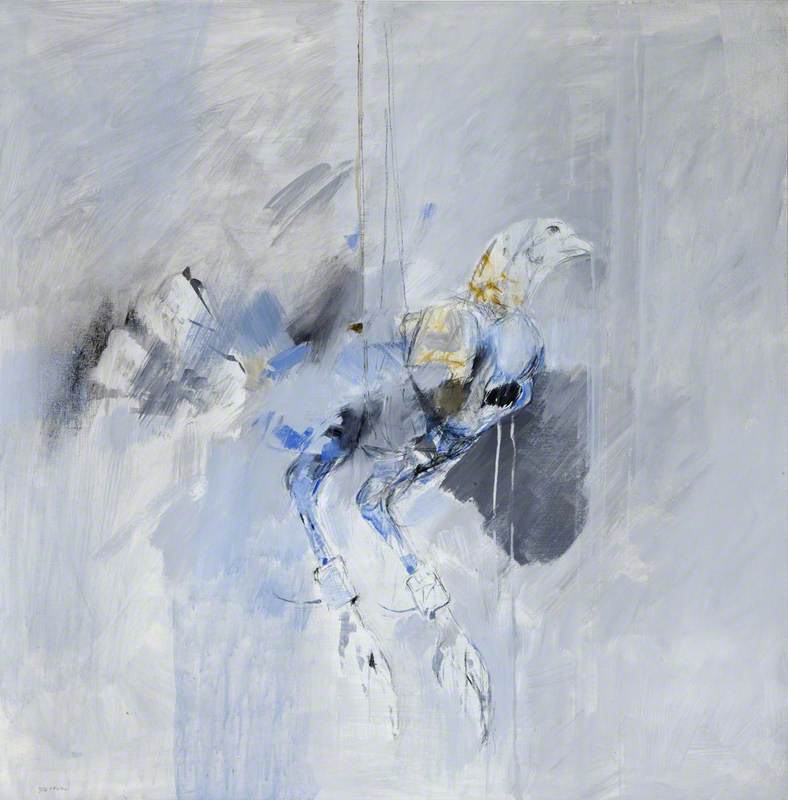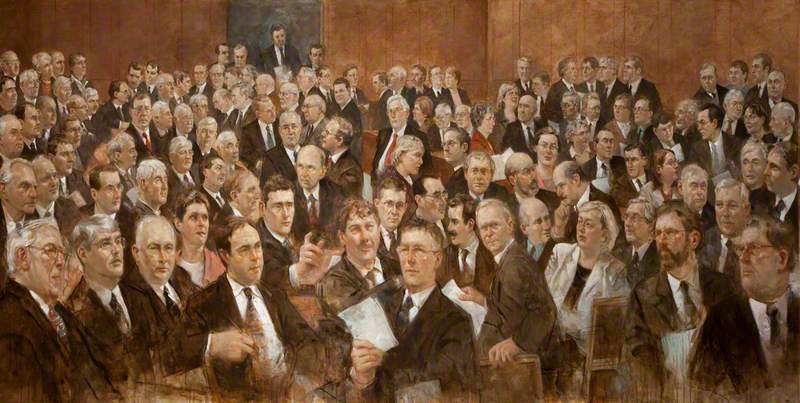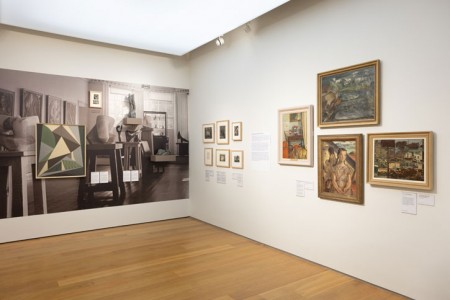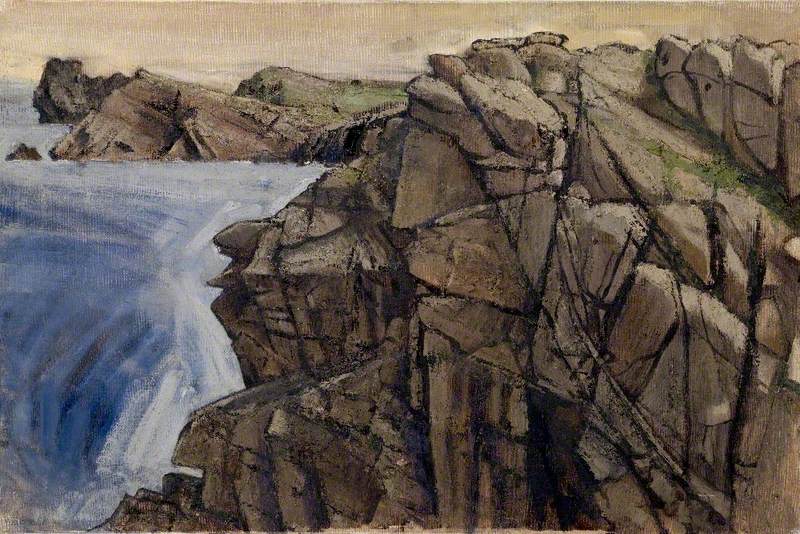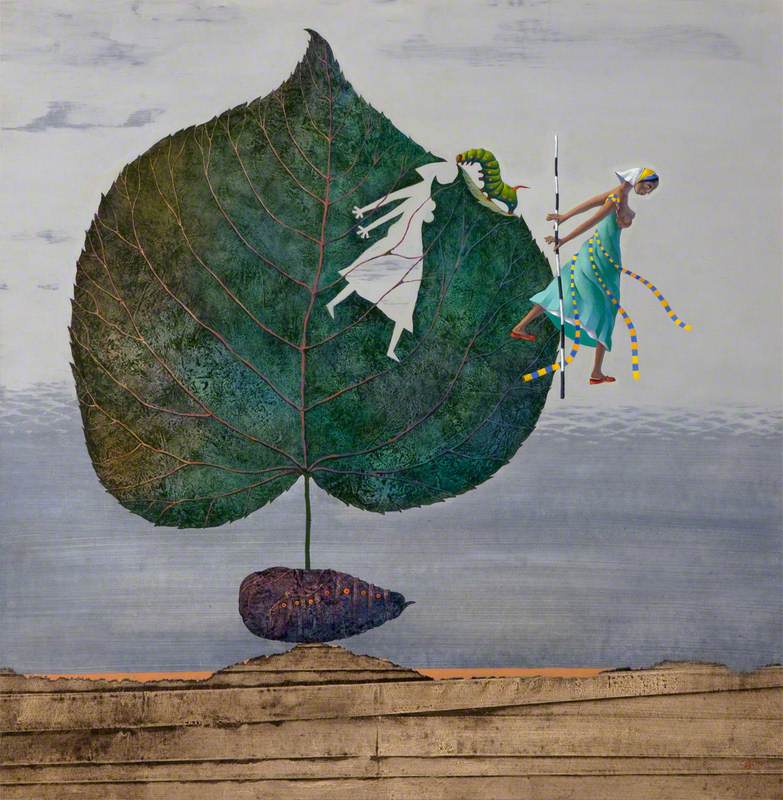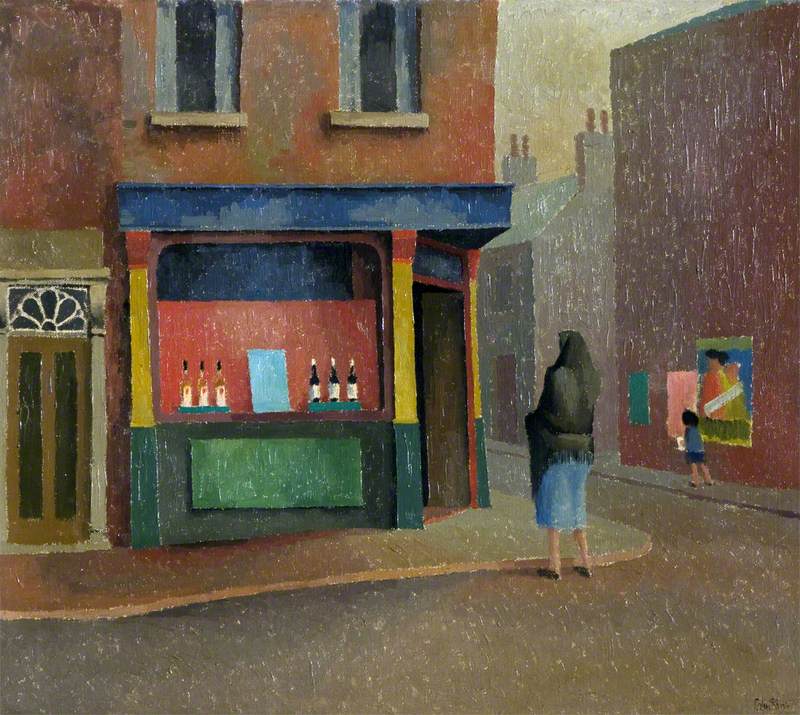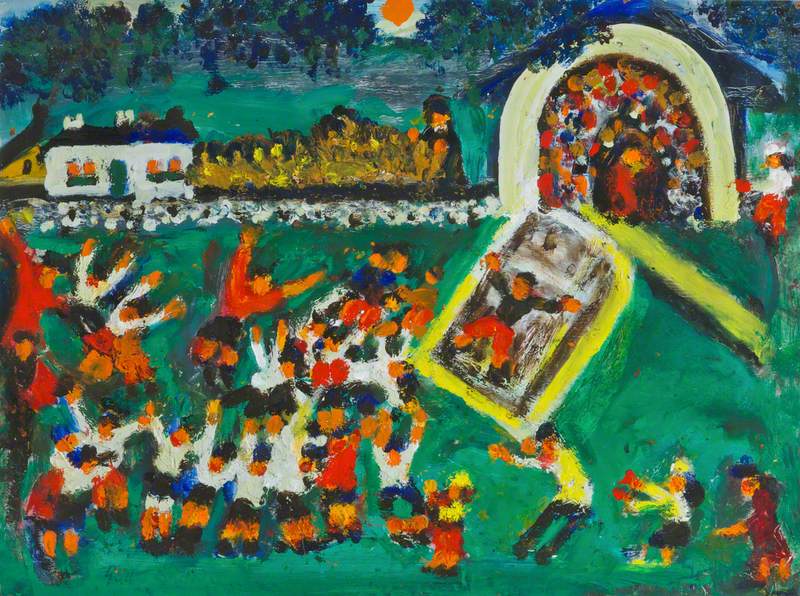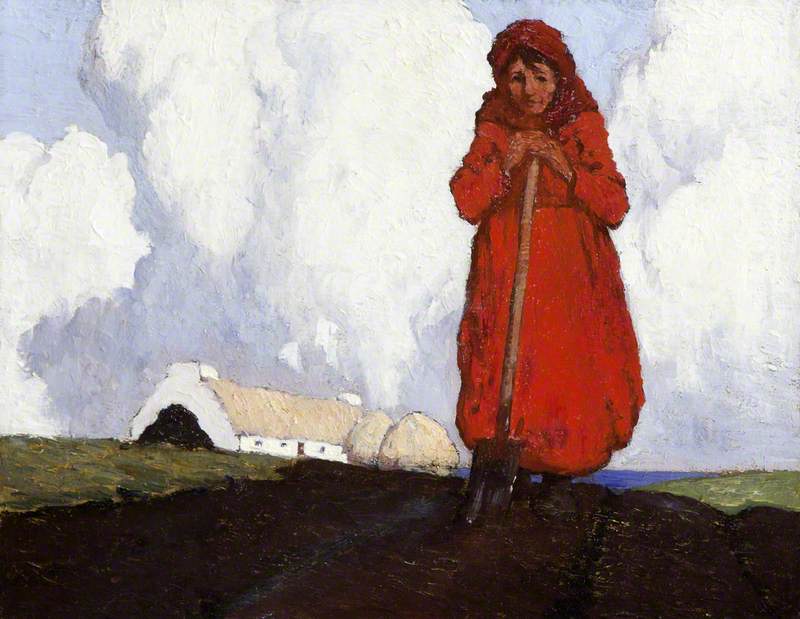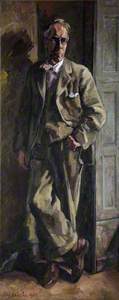Painting in Ulster in the first part of the twentieth century is often associated with a largely indigenous landscape tradition, so it is perhaps unexpected that one of the most successful and independent painters working in Belfast in the period before and after the Second World War had been born and trained in Ukraine. Paul Nietsche's reputation is based on his powerful and idiosyncratic personality as well as an extensive and engaging body of work, of which a number of examples are in public collections. In many ways, his art and his character are closely connected.
Self-Portrait
1944, oil on canvas board by Paul Nietsche (1885–1950) 
During the years he spent in Belfast, Nietsche gathered around himself a group of friends drawn from various creative fields – those from the theatre such as Jack Loudan and Joseph Tomelty, numerous fellow artists and also writers, most notably F. L. Green.
Green's 1945 novel Odd Man Out included amongst its characters Lukey Malquin, a painter who has been associated by some commentators with Markey Robinson – a younger, largely self-taught artist encouraged by Nietsche – but it is intriguing to wonder if the Ukrainian painter had also contributed to elements of Malquin and his environment.
Nietsche made a chalk drawing of F. L. Green that is in the NMNI collection and Green also wrote the foreword for Nietsche's 1949 exhibition with the Council for the Encouragement of Music and the Arts in Northern Ireland (CEMA), a forerunner of the Arts Council of Northern Ireland, in which he praised Nietsche's talent as 'mature and philosophical', while also 'provocative of controversy'.
Certainly, Nietsche's bohemian lifestyle was well known in Belfast at that time and it has arguably remained closely linked with his reputation as a painter. A striking figure, particularly later in life, with a long beard and often wearing a beret, Nietsche worked by night in an attic studio at 76 Dublin Road, halfway between the city centre and Queen's University.
Introducing MS 75 Paul Nietsche Collection: A small collection of items relating to Paul Nietsche (1885-1950), born in Ukraine but later settled in Belfast. Check out our bio for more info.#qubspecialcollections #paulnietsche #ukrainianartist #irishartist #20thcenturyartist pic.twitter.com/3Nvr6EsyMt
— QUB Special Collections (@QUBSC) October 14, 2022
His mystique was only enhanced by the strong accent he seems to have retained from his youth. Born in Ukraine to German parents in 1885, Nietsche's family moved from Kyiv to Odessa when he was six, where he studied first at the Imperial Academy of Fine Arts under Gennady Ladyzhensky and Kiriak Kostandi, before moving to the Academy of Fine Art in Munich in 1908. Intriguingly this was the same path previously taken by the acclaimed artist Leonid Pasternak, father of Boris Pasternak (author of Doctor Zhivago).
For some years Nietsche led an indefatigably peripatetic life, painting and exhibiting before the First World War in Paris, where he knew Auguste Rodin, then living with his family in Berlin after the war, before travelling through Europe in the 1920s and then to the USA and Canada in the following decade. Nietsche appears to have known the Russian singer Chaliapin, whose portrait he painted and who, coincidentally, was also painted by Pasternak.
Woman on a Sofa (Dorothy V. Williamson)
1934
Paul Nietsche (1885–1950) 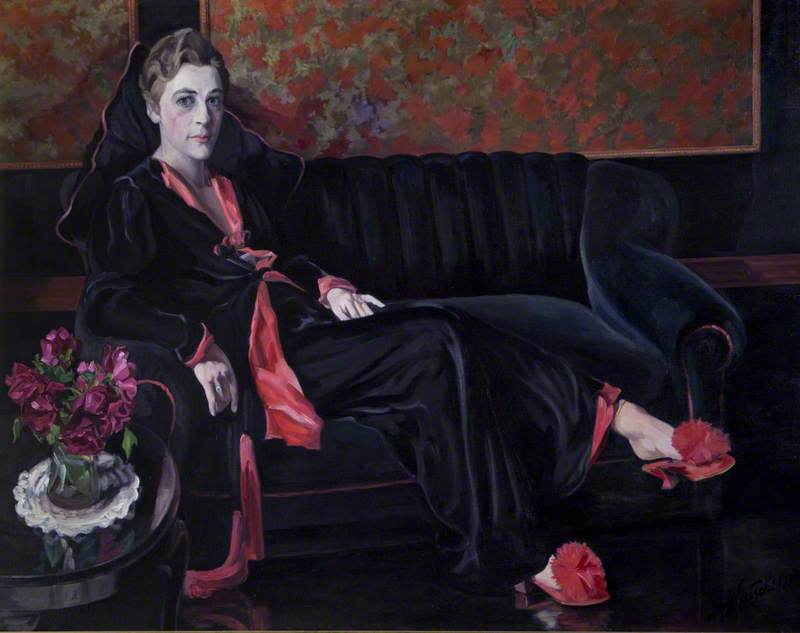
Nietsche had first visited Northern Ireland in 1926, at the invitation of Michael O'Brien, a friend from Berlin who had taken up a post as Professor of Celtic Studies at Queen's University, Belfast. Perhaps surprisingly, considering the scale and cultural standing of the cities in which he had lived, Northern Ireland must have appealed to the Ukrainian-born painter, as he seems to have visited on at least four further occasions before settling in Belfast in 1936.
As early as 1926 Nietsche had exhibited with the Ulster Arts Club, and then with the Royal Hibernian Academy in Dublin in 1930, before holding a solo exhibition in that city in 1934 with the United Arts Club. Despite this his interest appears to have been increasingly focused on Northern Ireland, holding a one-man exhibition in 1936 at the Magee Gallery, then Belfast's leading commercial gallery, where he continued to show work. It is noticeable that, despite becoming an established figure in the local art world, Nietsche never showed at the annual exhibition of the Ulster Academy of Arts, the largest exhibiting society in Northern Ireland, now the Royal Ulster Academy.
Portrait of Mr F. W. H. (Frederick W. Hull, 1867–1953)
1935
Paul Nietsche (1885–1950) 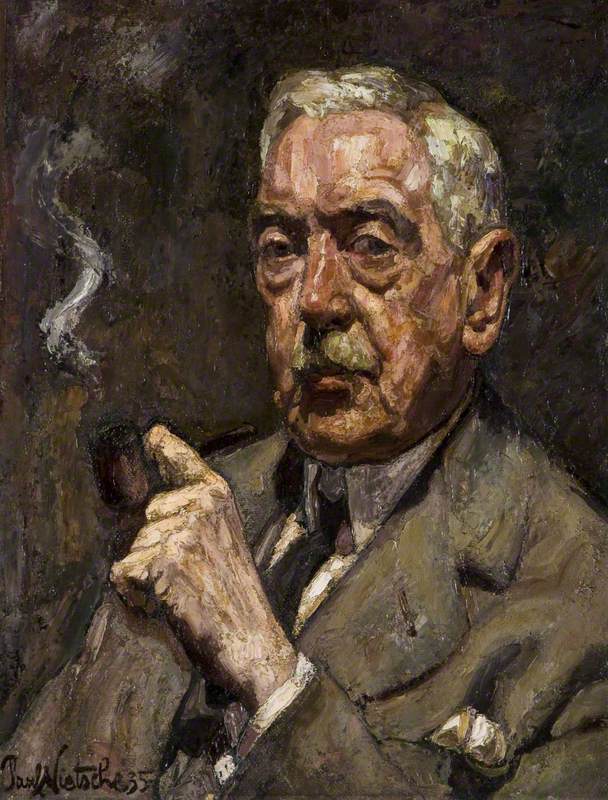
Nietsche's portraits seem to have expressed the pleasure he took in friendships, with 15 or more sittings required for each work, which perhaps explained why he so often turned to self-portraiture.
His friendships and professional relationships are well recorded in these works. He painted fellow artists F. W. Hull, W. H. Fry and James Humbert Craig, with all three works now in the NMNI collection, and he also exhibited alongside members of the younger generation of Ulster artists, notably George MacCann and John Hunter.
Unusually for an Ulster-based artist at that time Nietsche painted few landscapes – as well as portraits and self-portraits, still life and flower paintings remained the other main part of his work. There were few professional artists working in Northern Ireland in the 1930s and early 1940s and these were predominantly landscapists such as James Humbert Craig, Frank McKelvey and Maurice Wilks. Nietsche's practice was largely studio-based, whether in his portraiture or still life, which was in contrast to the en plein air landscape painting which was adopted by contemporaries such as Hans Iten.
Even stylistically Nietsche remained independent. S. B. Kennedy notes that his 'strong, extrovert personality' was 'expressed in a bold handling of brush and palette knife', with form solidly constructed and demonstrating a debt to Cézanne more than to his own contemporaries. His drawings have an exuberant line, although he was capable of delicate and detailed modelling of form at times.
The heavy impasto in his paintings and the use of strong light and shadow for modelling gives these a more expressionist sensibility than many of his Belfast fellow artists. For example, Black Eve and Green Apples was painted in 1949, the same year as Green Apples in the Ulster Museum collection.
Black Eve and Green Apples, now in a private collection (but illustrated in S. B. Kennedy's Irish Art and Modernism), includes a carving which recalls the inspiration that European modernists such as Derain and Picasso drew from what they termed 'tribal art' around the same time that Nietsche had lived in Paris. This suggests that even after more than a decade in Northern Ireland, he aligned himself with a European (as opposed to an Irish) tradition.
One of Nietsche's best portraits records his friendship with the legendary Belfast collector and patron Zoltan Frankl (to whom, apparently, he also introduced Markey Robinson). Originally from Budapest, Frankl and his wife Anny Lewinter had left Vienna in 1938 and settled in Belfast. The Lewinter-Frankl collection, which was shown at the Belfast Museum and Art Gallery in 1958, included no fewer than 18 paintings and four drawings by Nietsche and the two were close friends, with Frankl appointed as one of the executors of his estate.
In 1938 Nietsche applied to be a British citizen but, despite this, he was interned on the Isle of Man during the Second World War, presumably on account of his German family background. By 1943 he was again living in Belfast and soon established himself in an attic studio on the Dublin Road, where he lived alone apparently surrounded by empty bottles and cans – and with the company of a pet mouse.
Nietsche was regarded as one of the leading artists of post-war Belfast. CEMA supported him with four solo exhibitions and the acquisition of a painting, while he was also represented in an exhibition, 'Contemporary Ulster Paintings', held in Edinburgh in 1951, demonstrating the degree to which he had become accepted and established in his adopted province.
By this time, however, a younger generation of Northern Irish artists, such as Colin Middleton, Daniel O'Neill, Gerard Dillon and George Campbell had begun to exhibit successfully in Dublin and beyond Ireland, largely through an association with the Victor Waddington Gallery, and they introduced a more definitive modernism into contemporary art in Ulster.
In some ways, Nietsche's legacy appears to have been in the effect of his personality and the internationalism and bohemianism he brought to Belfast as much as in his impact as an artist on the development of Northern Irish painting, despite his encouragement of some younger artists, including Jean Meikle (later Osborne) and Markey Robinson. S. B. Kennedy wrote that 'he brought a touch of foreign colour to the city at a time when it was much needed'.
The post-war period in the city was notable for the presence of a number of prominent European émigrés, such as the painter Alice Berger Hammerschlag, dancer and choreographer Helen Lewis and the Lewinter-Frankls, all of whom invigorated the local art scene. Paul Nietsche's own contribution was acknowledged by an exhibition organised by his friends in 1952, two years after his death, while his continued significance was marked in 1984 when a retrospective exhibition was held at the Arts Council Gallery in Belfast.
Dickon Hall, art historian and Art UK Content Commissioner, Northern Ireland
This article was supported by Arts Council Northern Ireland
Further reading
Theo Snoddy, Dictionary of Irish Artists: Twentieth Century, Merlin, 2002
S. B. Kennedy, Irish Art and Modernism, Institute of Irish Studies, 1993
Sarah Finlay, National Self-Portrait Collection of Ireland, Volume 1, Limerick University Press, 1989
John Hewitt (ed. Ferguson and White), A North Light, Four Courts Press, 2013
Mark Adams, 'A Northern Maecenas' in Irish Arts Review, 2003
